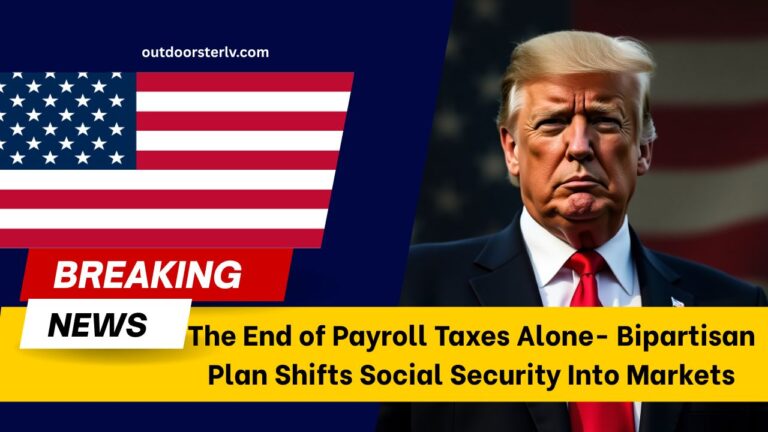A pivotal moment is unfolding in the debate over Social Security’s future. With trust fund reserves projected to be depleted by 2033, triggering potential benefit cuts of over 20%, lawmakers are proposing an ambitious bipartisan strategy: complement payroll taxes with a $1.5 trillion investment fund channeled into stocks, bonds, and diversified assets.
Here’s how this new approach could reshape your retirement checks.
1. Social Security Funding Crisis Deepens
- The Old-Age and Survivors Insurance (OASI) Trust Fund is expected to run out of funds by 2033. Without action, benefits could be slashed by up to 23%.
- When OASI is paired with the Disability Insurance (DI) Trust Fund into a combined OASDI fund, breakdown is delayed by only one year—funds could be exhausted by 2034, covering just 81% of benefits thereafter.
- Long-range projections show an estimated $25 trillion shortfall over the next 75 years if no changes are made.
- To sustain benefits, Social Security costs have already begun to exceed available income; reserves are dwindling fast.
2. Introducing the Investment Fund: A Market-Based Lifeline
- Senators Cassidy and Kaine (Republican and Democrat, respectively) have unveiled a bold, bipartisan scheme: create an additional investment fund to run alongside—not replace—the existing trust funds.
- The Treasury would seed the fund with $1.5 trillion, invested over time in stocks, bonds, and other market instruments aimed at generating higher returns.
- This fund gets a 75-year growth horizon, during which the Treasury continues to pay beneficiaries with regular payroll tax revenues.
- After 75 years, the fund would reimburse the Treasury and then begin supplementing or replacing payroll tax revenue, easing the burden on working Americans.
3. Why Experts Are Skeptical
- Critics argue the proposal sidesteps urgent reforms like tax adjustments or benefit restructuring, failing to address the root of insolvency.
- Borrowing a massive up-front sum—amid persistent deficits and mounting national debt—may raise interest rates and slow economic growth.
- Practical concerns include whether the fund will be managed with low-cost index options versus politically influenced investments.
- Despite higher historical stock market returns versus Treasury bonds, the proposal’s long delay before financial return raises questions about its timing and efficacy.
4. Snapshot of the Proposal vs. Projection
| Element | Current Projection | Proposal Overview |
|---|---|---|
| OASI Depletion Year | 2033 | Extended via new fund investment |
| Combined OASDI Coverage | 81% of benefits after 2034 | Full benefits maintained, supplemented post-growth |
| Projected 75-Year Shortfall | ~$25 trillion | Offset via market returns from $1.5T fund |
| Upfront Funding Required | None | $1.5 trillion investment from Treasury |
| Time to Financial Impact | Immediate bond-based payments | Delayed—targeted payoff after 75 years |
| Risk Factors | Market volatility, debt pressures | Same, plus added implementation complexity |
With the OASI Trust Fund facing depletion by 2033 and a staggering long-term shortfall looming, the proposed $1.5 trillion investment fund signals a bold shift away from reliance solely on payroll taxes.
Positioned as a bipartisan, market-based safety net, the plan aims to stabilize Social Security by leveraging returns on diversified investments, rather than imposing new taxes or cutting benefits immediately.
However, with complex implementation and uncertain returns, it may serve more as a long-range supplement than a short-term fix.
The future of retirement income depends on whether this bold vision complements or distracts from essential reforms.
FAQs
How soon will Social Security benefits be harmed if nothing changes?
OASI funds are projected to deplete by 2033, leading to potential 23% benefit cuts for retirees.
Will the new fund change my current benefits?
No. The proposal ensures no immediate changes to benefits—even as the investment fund grows to protect future payouts.
What are the main objections to the proposal?
Experts warn the plan avoids crucial reforms like tax or benefit updates, depends on risky market returns, and delays addressing urgent insolvency issues.

